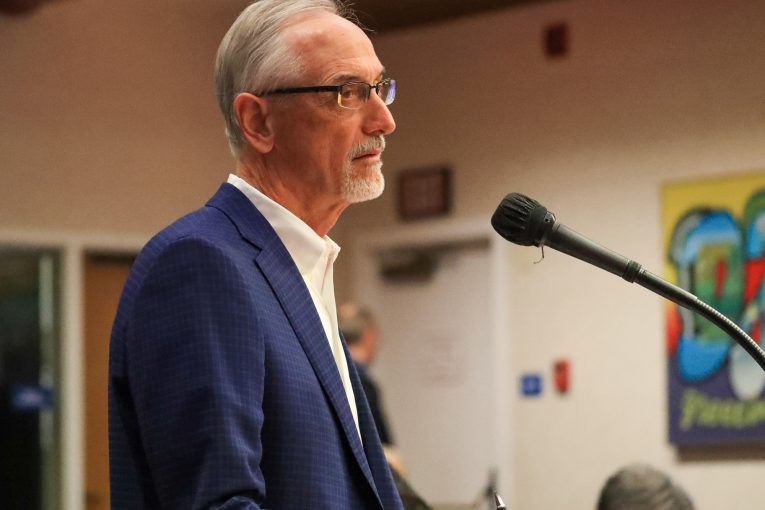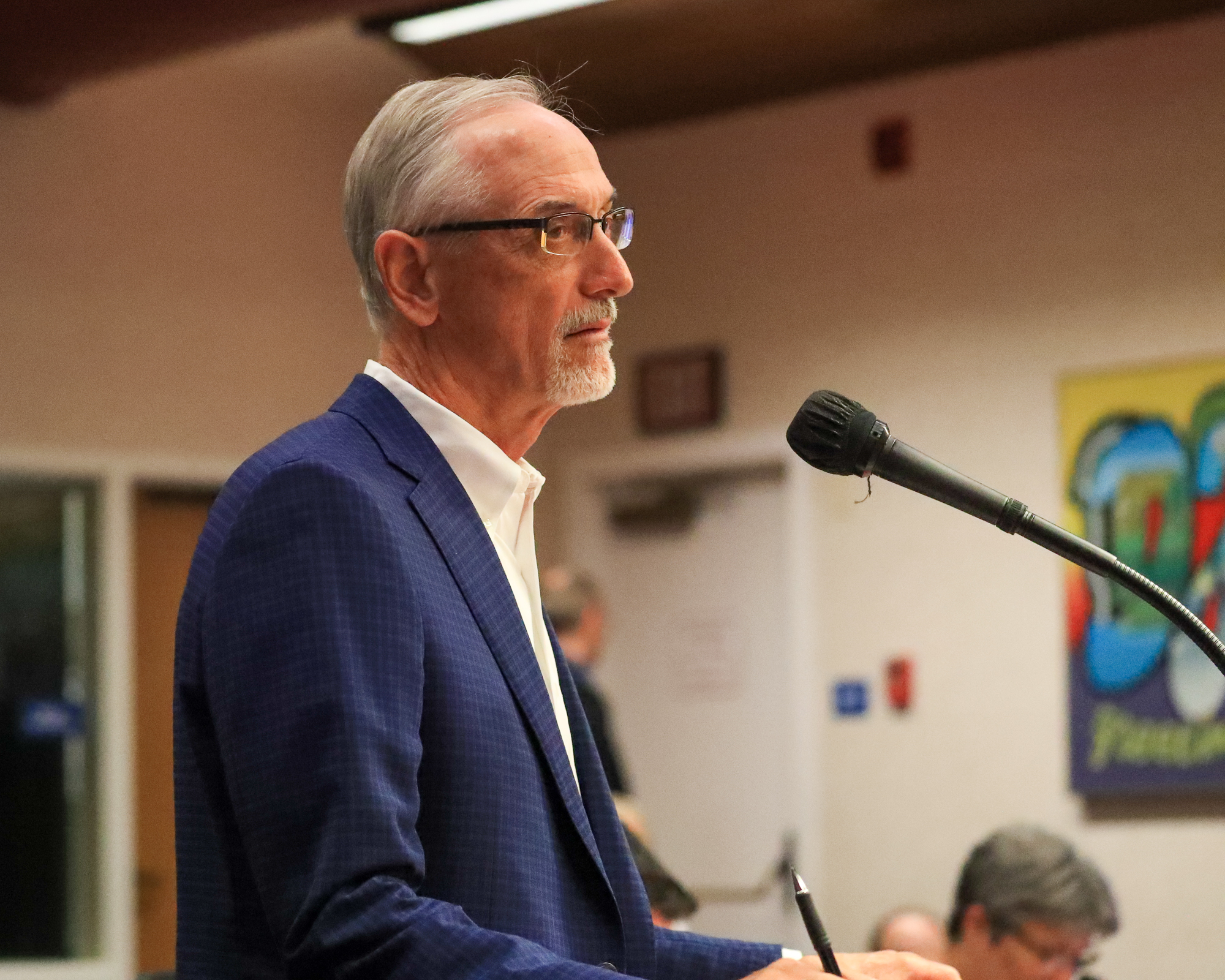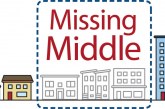

By David M. Greenwald
Executive Editor
Davis, CA – Four of the five projects had representatives speaking during public comment early Wednesday morning as the council pondered and ultimately opted to have further discussion on long-range peripheral projects.
Rochelle Swanson, former councilmember representing Village Farms, told the council, “I know it’s been said that nobody’s ready, but I will respectfully disagree. Village Farms Davis is ready. We’re ready to move forward to an EIR. We’re ready to make the commitments that we made in our application, and you’re going to hear from two other folks.”
At the same time, she felt some of the proposals were at odds with what she saw as Davis values.
“I appreciate trying to pull together a framework to look at these things. I do have some concerns with all my history and, and, and with my education and background and what I do professionally. I think there are some of these (in the proposed rubric) that are a little counter to Davis values,” Swanson explained.
She continued, “I do worry that we’re looking at buildable land. If you look at what LEED says, that runs counter to our high priority on open space habitat and parks and, and open walkways.
“I saw a sphere of influence has only one point and there’s very little to do with infill,” she continued. “You had a letter from LAFCo both on the 13th and I know you heard from her again about the fact that you are to really kind of prioritize sphere of influence. And we are the only property that as you can see, that is within this sphere of influence that’s already been predetermined.”
Lyda Dellis-Schlosser, also speaking for Village Farms, noted, “Your development scoring rubric has been an interesting exercise we gave. We went through it in a lot of detail and have some suggestions. As you know, Village Farm Davis has submitted and paid the fees for a full and comprehensive application as of April 7th.”
She then offered to go beyond the current density proposal.
She said, “Should we be selected to move forward with the EIR process, increase our density by 30% to 1800 units, increase the developable units per acre to 9.1 with an average parcel size of 5,000 square feet, increase the amount of mixed building types and incorporate a multimodal hub from the beginning.”
She explained, “We have provided over and above the current city requirements for affordable housing because we believe strongly that we must provide a ladder of housing opportunities attainable to first time home buyers and low income earners. We are staying with our original commitment in providing the following 15% affordable housing in the form of 270 multi-family units for the extremely low, low and very low income earners. “
She added, “This includes 60 large family section eight apartments. Additionally, we are committed to building 310 starter homes, ranging in the size from 800 to 1200 square feet. These will be available to first time home buyers through our developer contribution program.”
Michael Faust, speaking on behalf of Pioneer Community Project, said, “We respectfully request the city refrain from proceeding with the current rubric proposal as presented for the projects that are in the pre-application stage” which he differentiated from the project that had been presented before him which had already submitted an application.
“Instead, we urge you to direct staff to engage, to meet with the pre-application phase projects like Pioneer Community Projects. As we prepare our full application that aligns with the city requirements, we make this request because pre-application stage projects are in a different phase of the process than full application projects. Specifically, we do not seek authorization for to be on the 2024 ballot or authorization to proceed with an environmental impact report at this stage.”
He added, “It is crucial to recognize that the pre-application projects are at a different stage compared to the full application projects. However, the staff report treats all projects as if they’re in the same category. Pre-App applications cannot address the detailed questions in the rubric with great confidence.”
Faust also expressed concern that the rubric fails to acknowledge some of the significant points of their project’s ability to deliver carbon reduction and clean energy.
“The Pioneer Community Project is designed to be completely zero carbon in terms of energy production and usage, not only for the homes in the project, but also for an additional more than a thousand homes daily:’ he said. “This project embodies the principles of what Davis has long aspired to achieve being the greenest community potentially worldwide.
“Regrettably, the rubric fails to acknowledge the significance of our initiative by neglecting to consider our project’s potential. The city misses a remarkable opportunity to undertake a game-changing endeavor that aligns with the goals of decarbonizing Davis.”
George Phillips on behalf of Shriner’s Property: “We have concerns that we think it can be simplified and worked with. I think we have confidence in the council to develop a rubric or a metric by which it can evaluate the different proposals that have been submitted to the city and that that metric will be reasonable and objective in evaluating the different projects.”
Phillips said, “We are prepared to demonstrate how we can meet each and every one of the points that in our self-evaluation that we will give you and you’ll be able to measure that:”
He said, “We’re not so selfish to believe we should be the only project moving forward .. We think that there are many attributes and positives and benefits and amenities that are being presented to the city with each of these projects.”
Phillips added, ‘We’re not here to say do us and don’t do anyone else, or we’re not here to say we’re the best. We’re here to say that we think we’ve designed something that’s outstanding and that it will only improve going through the process. And we look forward for that process to begin that process.”
He concluded, “We are asking that we be initiated among whichever number you choose to move forward with and a reasonable timeframe of 2026 before expecting to be in front of the voters of the city of Davis.”
Matt Keasling on behalf of Palomino Place said, “I appreciate the work of the subcommittee and the fact that you put together a rubric. I think that there are very important criteria there that you should be looking at projects and evaluating them based upon those criteria. I think it still needs work and I think it would benefit from going out for some more public comment and think that it would be completely appropriate to think about that when you’re looking at the general plan update process.”
Keasling added, “While we need to be thinking about this criteria, we also need to be moving forward in haste. There’s a massive housing crisis. You have several projects before you that would like to deliver housing for the city of Davis:’
He added, “Quite frankly, many of those projects are, are different sizes and face different challenges. And regardless of what you do tonight or next week, they’re not all going to come online at the same time.”
The council however, denied a vote, 4-1, to move forward with the EIRs and will discuss what steps to take and how proceed at a future meeting.







This is actually something I’d like to see more of – a former council member representing a developer, bashing the other proposals.
The other developers (especially Shriner’s) are going to have to step-up their attacks, to knock out the frontrunner.
Indeed – put all five of them on the ballot, simultaneously.
Just to clarify, she was speaking about the proposed rubric, not the other proposals.
Well, that’s disappointing.
Regardless, Shriner’s is going to have to do better than this:
This is weak.
And (even if these developers don’t want to openly acknowledge it), it is absolutely a “competition”. As you can imagine, I’m hoping that they all fight each other to their figurative deaths.
But for sure, Shriner’s is getting the “short end of the stick” from the city, at this point. And for sure, they should be “included”, as they requested. (They actually submitted their proposal before Covell Village II.)
What’s the status with 100% Housing DISC, these days? Not hearing much from them.
Those are some pretty big changes, I’d say.
From everything presented so far, it sounds to me as though Village Farms could be ready for a 2024 ballot measure. I suggest it’s time to stop dithering around and move forward on these proposals so the voters can make some decisions. This town talks everything to death and that seems to be an actual strategy for obstructing development. The voters have the final say regardless.
Given the number and complexities of these projects, we almost need an ongoing spreadsheet to keep track of them.
As noted yesterday (in comments which still haven’t appeared), David’s claim that unbuilt developments “cannot be used again” for future RHNA cycles is apparently faulty. No support has been forthcoming, regarding his claims. Instead, he just keeps repeating irrelevant (or at best – “incomplete”) information.
And yet, David is using this faulty premise (as a primary justification) in support of his peripheral development advocacy.
Let’s hope that the city is obtaining accurate information from somewhere.
That’s for sure.
I couldn’t care less and this isn’t relevant to my comment. We need housing. Let’s get moving. Get something on the ballot in 2024.
No one reading this needs (additional) housing, nor would they benefit from it. There are interests which would benefit from it, but those aren’t house-hunters.
If anyone is waiting for someone to “build something for them’, they’re not going about their house-hunting in a very effective manner.
If they try to rush (or favor) something for the 2024 ballot, it’s going to work against them, at this point. Opponents will see to that.
And one of the very first things to be challenged are false claims regarding RHNA targets.
Another very-effective tool (for opponents) is all of the other developments “waiting in the wings” – whether or not they’re on a 2024 ballot. For that matter, even “supporters” (of various proposals) can be pitted-against each other.